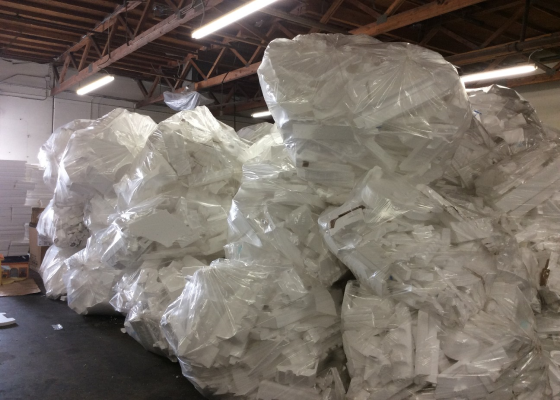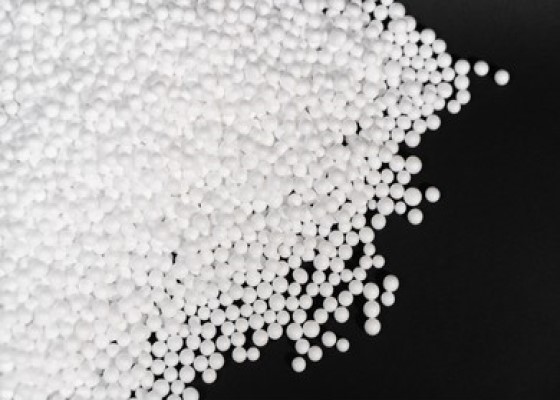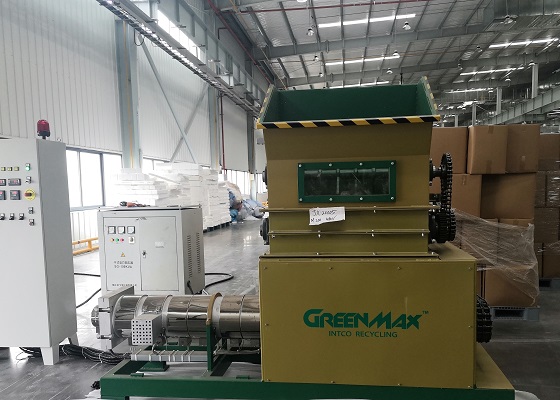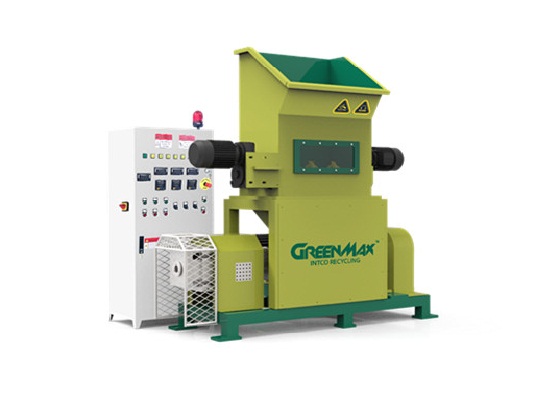Plastics Today published an article. It pointed out two important facts about expanded polystyrene (also known as EPS or polystyrene foam). The first one they pointed out was that EPS packaging is recyclable. The second one is that it is just a small part of our landfill and solid waste stream. Although this article was written a long time ago, the latest data on the recyclability of EPS helps support these two facts. According to the 2019 US EPS Recycling Report, more than 136 million pounds of EPS have been recycled. Calculated by weight and volume, EPS is less than 1% of the total municipal solid waste. How to deal with recycled EPS?The answer is EPS densifier.

In 1839, German pharmacist Eduard Simon discovered polystyrene. When he isolated it from natural resin, he was actually unaware of this discovery. 80 years later, Hermann Staudinger, an organic chemist found that Simon had discovered a plastic polymer. Staudinger won the Nobel Prize in Chemistry for all his research related to polystyrene. In the 1930s, BASF scientists discovered a new way for commercial production of polystyrene. At the end of the decade, the Dow Chemical Company introduced products made from polystyrene to the United States.
Polystyrene foam was invented by Otis Ray McIntire and was patented in 1944. McIntire is a scientist at Dow Chemical. His career began in World War II when the supply of rubber was in short supply. McIntire was determined to create a rubber-like material that could be used for insulation purposes. When he combined styrene and isobutylene, he accidentally produced Styrofoam. The result of the combination is foam, which is 30 times lighter in solid form and more flexible than polystyrene. The production is also very cheap.

When it comes to polystyrene foam, it is used worldwide as a packaging material for food and fragile items during transportation. Due to the huge demand for packaging materials, nearly 10 million tons of polystyrene foam are produced all over the world to meet the needs of food, shipping, and other industries. Therefore, how to deal with used polystyrene foam become a new problem.
Polystyrene foam is 100% recyclable, and it has a large demand. Its value is about $350/ton. It can be recycled and reused effectively. As long as it is equipped with a polystyrene densifier, air can be safely extracted from the material and compressed into a manageable size.

One of the main advantages of modern recycling machines such as polystyrene foam densifier is that they can provide greater production capacity and have good energy-saving effects. This can help companies save energy costs. Vertical foam compressors help to significantly reduce the total amount of waste. This further helps facilitate storage and transportation and helps reduce transportation costs, which would otherwise be a great burden. The modern foam recycling machine has a sturdy design and is very suitable for any environment (industrial and commercial). This also represents the durability of these machines. When it comes to recycling machines, GREENMAX Styrofoam densifier must be known.

GREENMAX Styrofoam densifier is a piece of domestic professional processing equipment for EPS foam waste. Its main operating principle is to pulverize the foam first and then compress the foam by physical extrusion with a screw. On the one hand, it can reduce the volume of the foam and save transportation costs. On the other hand, it can provide higher density materials for the subsequent crushing and granulation.